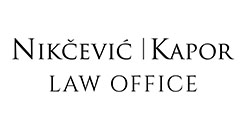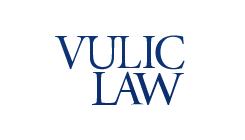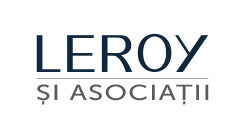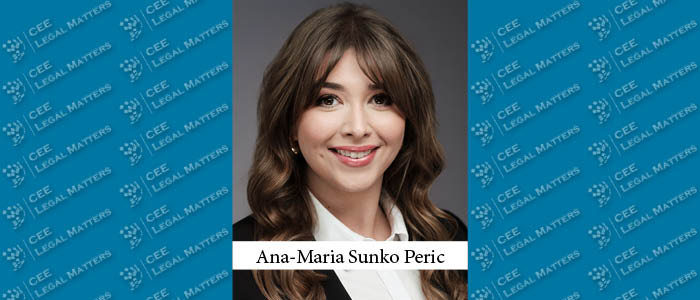What is ESG? ESG refers to the three key factors (environmental, social and governance) when measuring the sustainability and ethical impact of an investment in a business or company and it is commonly used in capital markets and commonly used by investors to evaluate the behavior of the companies, as well as determining their future financial performance.
ESG as a real estate value driver
According to the ENEP Buildings Global Status Report, CO2 emissions in 2019, from the operation of the buildings, has increased to its highest level yet, around 28% of the total global energy related CO2 emission. Therefore, extensive measures must be taken in order to decarbonize the European economy and reach the goal of being climate neutral by year 2050, which goal is being pursued at the EU level through both the European Green Deal and EU Financing Sustainable Growth Action Plan. The EU has set out six specific environmental objectives, which include: climate change mitigation, climate change adaption, sustainable use and protection of water and marine resources, transition to a circular economy, pollution prevention and control, and protection and restoration of biodiversity and ecosystems. The Green Deal will not only impact the real estate companies, but also their business models, market demand, and financing conditions. With respect to that, the European Union has developed funds within the European Green Deal Investment Plan, such as the European Energy Efficiency Fund, in order to support and assist EU Member States during their transitions to green economy while easing the implementation of these new practices. However, the support from the EU must be accompanied by private investment as well, including multiple banks and investors offering larger credit and better terms for “green financing.”
Even though the environmental seems to be the most important criteria of the ESG in the real estate sector, the governance scrutiny is critical for companies’ ability to continue their operations. Not addressing governance considerations carries a high risk for real estate companies, including significant penalties and fines, loss of reputation, and even reduced market penetration. However, promoting a corporate governance presents opportunities for real estate companies to drive up their long-term value. Governance elements consist of compliance with governance rules, ensuring transparent and efficient remuneration, fostering diversity, reducing corruption, and prompting transparent disclosure of these issues. Establishing and communicating organizational values, such as a culture of ethics, compliance and integrity, is ultimately the basis for companies to have positive long-term impacts.
During the COVID-19 pandemic, the social aspect of ESG has gained increasing attention. Social aspects include affordable housing, ensuring security of buildings, participation in rehabilitating public spaces, and assuring human rights. Internally, this would include guaranteeing workplace safety, high standards of labor practices, promoting diversity, and implementing responsible marketing strategies. Neglecting these social elements can lead to loss of reputation, higher employee turnover, increased operating costs, and more. However, incorporating these social aspects can attract more talent to companies and improve their reputation overall.
Ultimately, implementing ESG strategies allow companies to have higher profits, better reputation among stakeholders, and a higher change of attracting and retaining new clients. These efforts will provide viable long-lasting value for companies and the real estate sector in general.
Further, as a guide for investors and practitioners, the EU Taxonomy, drafted by the European Commission within the Sustainable Finance Action Plan (SFAP) has provided guidelines and objectives to ease access to capital at the project level. The EU Taxonomy requires that economic activities which are considered environmentally sustainable must be defined and classified so that the degree of environmental sustainability of an investment can be determined and consists of three objectives: optimizing the use of resources, reducing emissions and waste, and extending the lifespan of assets by adopting a more circular economic approach with the goal of creating elongation of said project cashflows. These new objectives are in place to motivate companies to use innovative technology and methods to extend the life of their buildings and/or find solutions to extend the usability of their materials. Taxonomy Regulation, has most requirements applicable beginning January 1, 2022.
Regulators, investors, stakeholders and the public have increasingly been holding businesses accountable for sustainable practices. In that respect EU Sustainable Finance Disclosure Regulation (SFDR) should be mentioned, which requires the disclosure of sustainability related policies and data at both product and entity levels. Within the scope of this regulation, certain real estate asset managers, investment products, and/or product manufacturers of real estate investments are included, as well as certain financial products and extending to the product manufacturers and their financial advisors located in the EU. SFDR measures are implemented on (i) “Level 1” - applicable from March 10, 2021 which sets framework principles that establish harmonized transparency rules regarding sustainability risks along with the adverse impact on sustainability factors; and (ii) “Level 2” - applicable from January 1, 2022 which supplements Level 1 with greater details, structure, and clarifications. Until the application of Level 2 in January 2022, SFDR compliance is more “principle based” and qualitative, giving managers the opportunity to adapt and build sustainability strategies before the more rigorous requirements come into action. It is also important to mention that from year 2021 and beyond, tax transparency has and will continue to be embedded in sustainability reporting regulations. Under the SFDR, financial market participants and advisors must disclose sustainability risks in all investments.
Entities who follow or even exceed these sustainable guidelines are highly likely to benefit from easier access to administrative permits, more strategic freedom, and potential new growth opportunities as they expand their services into other regions – all leading to new revenue streams. As environmental and social issues continue to take the lead as a public and policies priority, investors have had a growing concern regarding ESG related data. With respect to ESG Data Management in the Real Estate Industry, it is important to stress out that real estate investors and regulators have been demanding more sustainability disclosures, causing companies to focus their efforts on the related data management issues.
Finally, it is important to note that as ESG regulations continue to come into play, and the visible impact of climate change becomes more evident, the operation of green buildings and green leases have gained increasing importance in the real estate sector. Green leases aim to ensure the sustainable construction, usage, and maintenance of properties. There is currently no common European standard or definition of a “green lease,” however, some countries such as Sweden and France have created uniform green standards that could serve as a reference when developing green lease framework for other countries. When drafting a lease agreement, all particular circumstances should of course be taken into consideration and addressed, such as for example use, supply, and management of the property, construction and maintenance, as well as transparency and data exchange / monitoring. Due to the growing prevalence of ESG criteria, it is expected that “green clauses” will soon be implemented into lease agreements, however, they are currently not common. Therefore, a help by an experienced attorney at law when deciding on how to use them is highly recommended.
Rethinking Due Diligence – ESG Impact on M&A
As the public’s awareness of environmental challenges increases, investors have a growing interest in integrating ESG factors into their due diligence process. ESG due diligences in the Mergers & Acquisitions (M&A) business provides meaningful insights for said investors to gain more knowledge and insights prior to completing a transaction. As awareness rises, shareholders and various stakeholders in the real estate sector expect their company management to contribute towards reaching global and local environmental goals and expect them to dedicate time towards sustainable practices. Ignoring these issues, such as social rights and environmental violations, can have a huge negative impact on businesses growth and public perception. Not only do these issues have the potential to cause financial and reputational risks, but investors are also seeking more transparency before signing deals to avoid potential ESG issues.
The real estate sector has become more closely monitored by governmental and authoritative bodies over their environmental impacts, making ESG due diligence ever so important. Institutional investors and sovereign wealth funds have been at the forefront of the deal making in the renewables space. Both the EU Action Plan on Sustainable Finance and EU Taxonomy have defined certain criteria for sustainable practices and investments, creating more transparency on the issue. ESG due diligence allows management, investors, and stakeholders to assess risks, find red flags, and on a more positive note, shows future opportunity and value creation potential via increase energy efficiency.
The purpose of ESG due diligences is typically to analyze target compliance with international and national regulations. They also provide stakeholders with ESG expectations, emphasizing the companies environmental, social, and governance standpoints. Regarding environmental standpoints, the due diligence summarizes the company’s ecological impact, existence of current policies and management of environmental issues including CO2 emissions, water usages, waste and more. Another important factor is how the business model interacts with important environmental stakeholders and expects to lessen its impacts. Socially, the due diligence covers the company’s responsibilities and policies regarding human rights, the health & safety of employees, labor and equality guidelines, diversity and more. The third dimension, governance, analyses the existence of current corporate codes of conduct (such as anti-corruption), board transparency, risk management systems, and remuneration. Each ESG due diligence varies among different industries and cannot have a “one size fits all” methodology. When selecting ESG criteria, specific target and industry factors must be considered, depending on the company itself. When conducting ESG due diligence, expertise and strong methodological insights are essential to their success and decision making.
End note
The real estate sector must adapt their business approach to fulfill many current and future sustainable objectives, on a local and international scale. These include being compliant with all regulations, detect new opportunities to control building operation costs, and attract green-driven investors and talents. Defining specific decarbonization targets, and creating a roadmap, is critical to the corporate development and transformation of the real estate companies. The entity’s strategic approach has and will continue to have a major impact on future business endeavors. Ultimately, entities have two choices: the compliance path, with minimum effort put forth to align with national plans and regulatory obligations, or the leader’s ambitions, moving quickly towards ESG excellence and upping their value in the market and reputational aspects. To conclude, instead of focusing solely on regulatory compliance, it is crucial to create a big picture definition and implementation of ESG strategy for the near future.
By Matea Gospic Plazina, Partner, Krehic & Partners in cooperation with Deloitte Legal



























